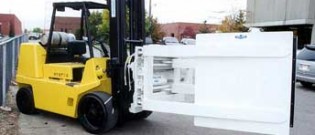Bubbles into a single amorphous body of water
Where does it go, this vanishing land? It sinks into the sea. The Gulf of Mexico is encroaching northward, while the marshes are deteriorating from within, starved by a lack of river sediment and poisoned by seawater. Since 2011, the National Oceanic and Atmospheric Administration has delisted more than 30 place names from Plaquemines Parish alone. English Bay, Bay Jacquin, Cyprien Bay, Skipjack Bay and Bay Crapaud have merged like soap bubbles into a single amorphous body of water. The lowest section of the Mississippi River Delta looks like a maple leaf that has been devoured down to its veins by insects. The sea is rising along the southeast coast of Louisiana faster than it is anywhere else in the world.
The land loss is swiftly reversing the process by which the state was built. As the Mississippi shifted its course over the millenniums, spraying like a loose garden hose, it deposited sand and silt in a wide arc. This sediment first settled into marsh and later thickened into solid land. But what took 7,000 years to create has been nearly destroyed in the last 85. Dams built on the tributaries of the Mississippi, as far north as Montana, have reduced the sediment load by half. Levees penned the river in place, preventing the floods that are necessary to disperse sediment across the delta. The dredging of two major shipping routes, the Mississippi River Gulf Outlet and the Gulf Intracoastal Waterway, invited saltwater into the wetlands’ atrophied heart.
Beneath the surface, the oil and gas industry has carved more than 50,000 wells since the 1920s, creating pockets of air in the marsh that accelerate the land’s subsidence. The industry has also incised 10,000 linear miles of pipelines, which connect the wells to processing facilities; and canals, which allow ships to enter the marsh from the sea. Over time, as seawater eats away at the roots of the adjacent marsh, the canals expand. By its own estimate, the oil and gas industry concedes that it has caused 36 percent of all wetlands loss in southeastern Louisiana. (The Interior Department has placed the industry’s liability as low as 15 percent and as high as 59 percent.) A better analogy than disappearing football fields has been proposed by the historian John M. Barry, who has lived in the French Quarter on and off since 1972. Barry likens the marsh to a block of ice. The reduction of sediment in the Mississippi, the construction of levees and the oil and gas wells “created a situation akin to taking the block of ice out of the freezer, so it begins to melt.” Dredging canals and pipelines “is akin to stabbing that block of ice with an ice pick.”






